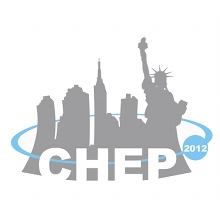Speaker
Matthias Richter
(University of Oslo (NO))
Description
High resolution detectors in high energy nuclear physics deliver a huge
amount of data which is often a challenge for the data acquisition and
mass storage. Lossless compression techniques on the level of the raw
data can provide compression ratios up to a factor of 2. In ALICE, an
effective compression factor of >5 for the Time Projection Chamber (TPC)
is needed to reach an overall compression factor suited for data taking
in Heavy Ion data-taking.
The ALICE High Level Trigger provides online calculation of the TPC
clusters from the raw data, followed tracking, thus producing a fully
reconstructed event. Storing the reconstructed cluster data in an
appropriate compressed format for utilization in the off-line
reconstruction allows to discard the original raw data of the TPC. In
the presented solution, compression factors of 5 to 6 are achieved
without any loss in the physics information of the event. By associating
space points to reconstructed tracks, all relevant parameters can be
transformed into a format suitable for huffman compression. In a first
conservative approach, all reconstructed clusters are kept in the data.
Enhanced data compression factors can be achieved by further analysis of
the space point properties and discarding clusters which are irrelevant
for the measured observables.
Data compression has been implemented for the ALICE TPC in 2011 for
usage in the Heavy Ion data-taking. The generic implementation of the track
model concept supports the application for other detectors. In this
contribution the results for TPC data compression from the 2011 Heavy
Ion run and studies for other detectors are presented.
Author
Matthias Richter
(University of Oslo (NO))
